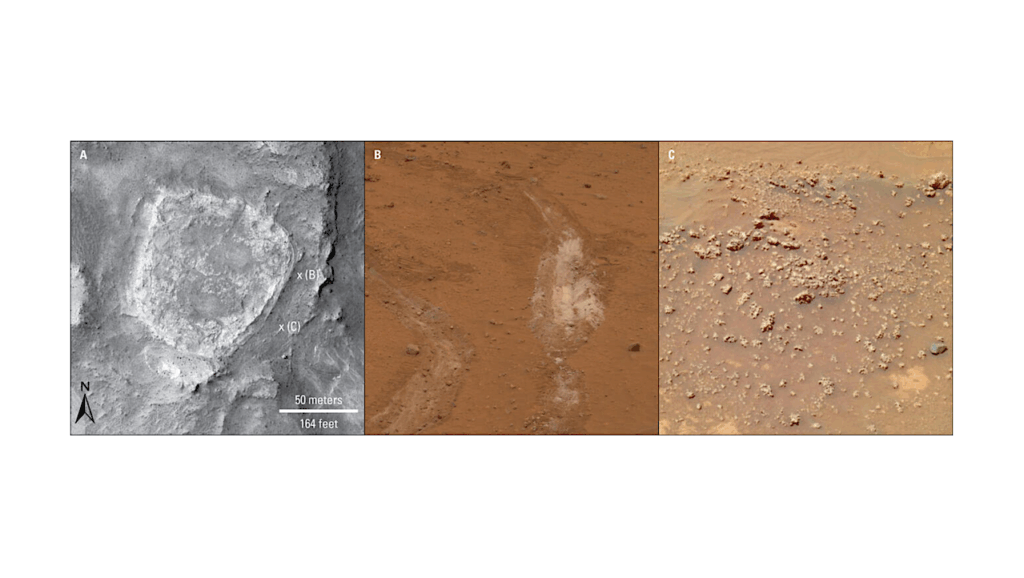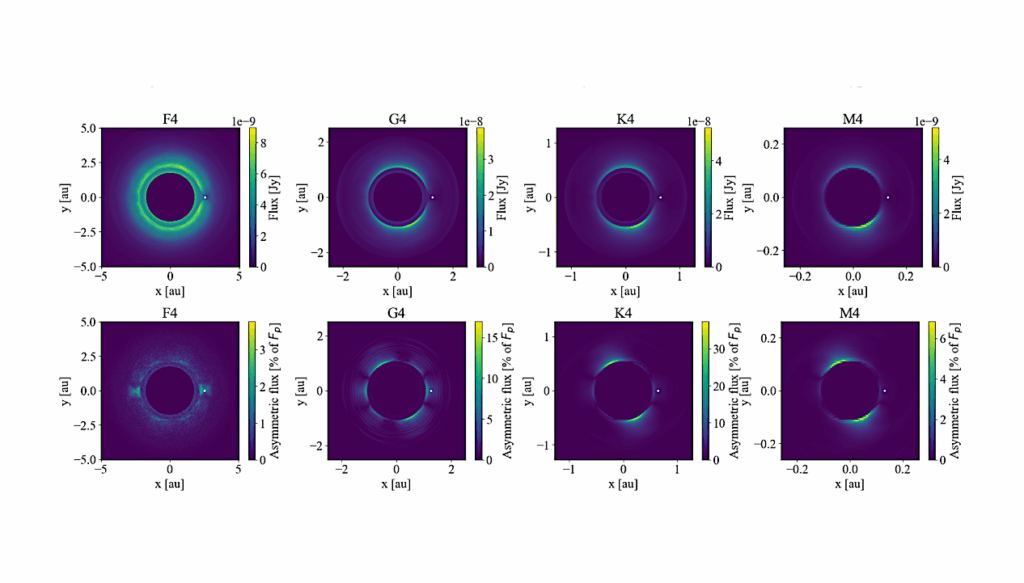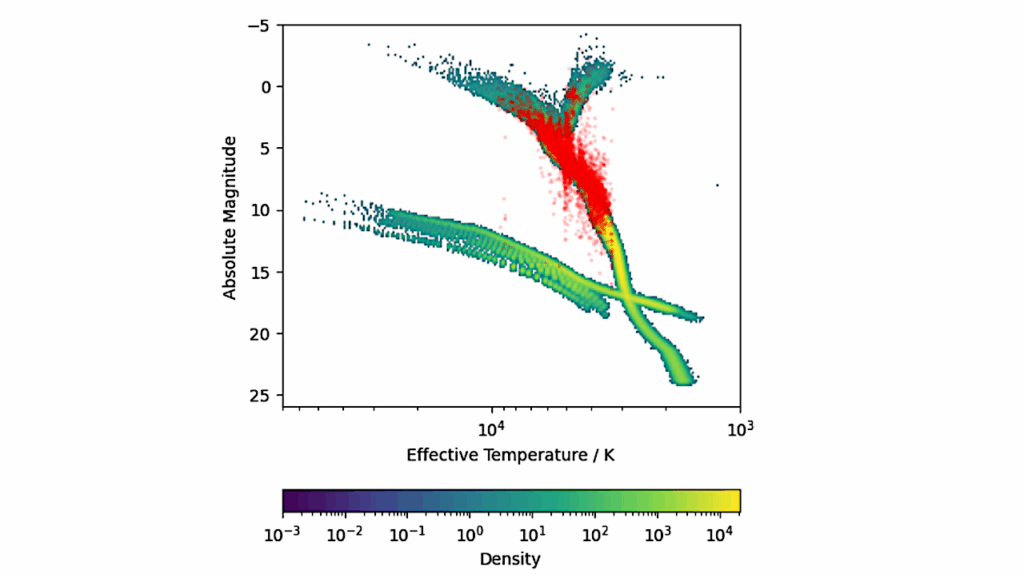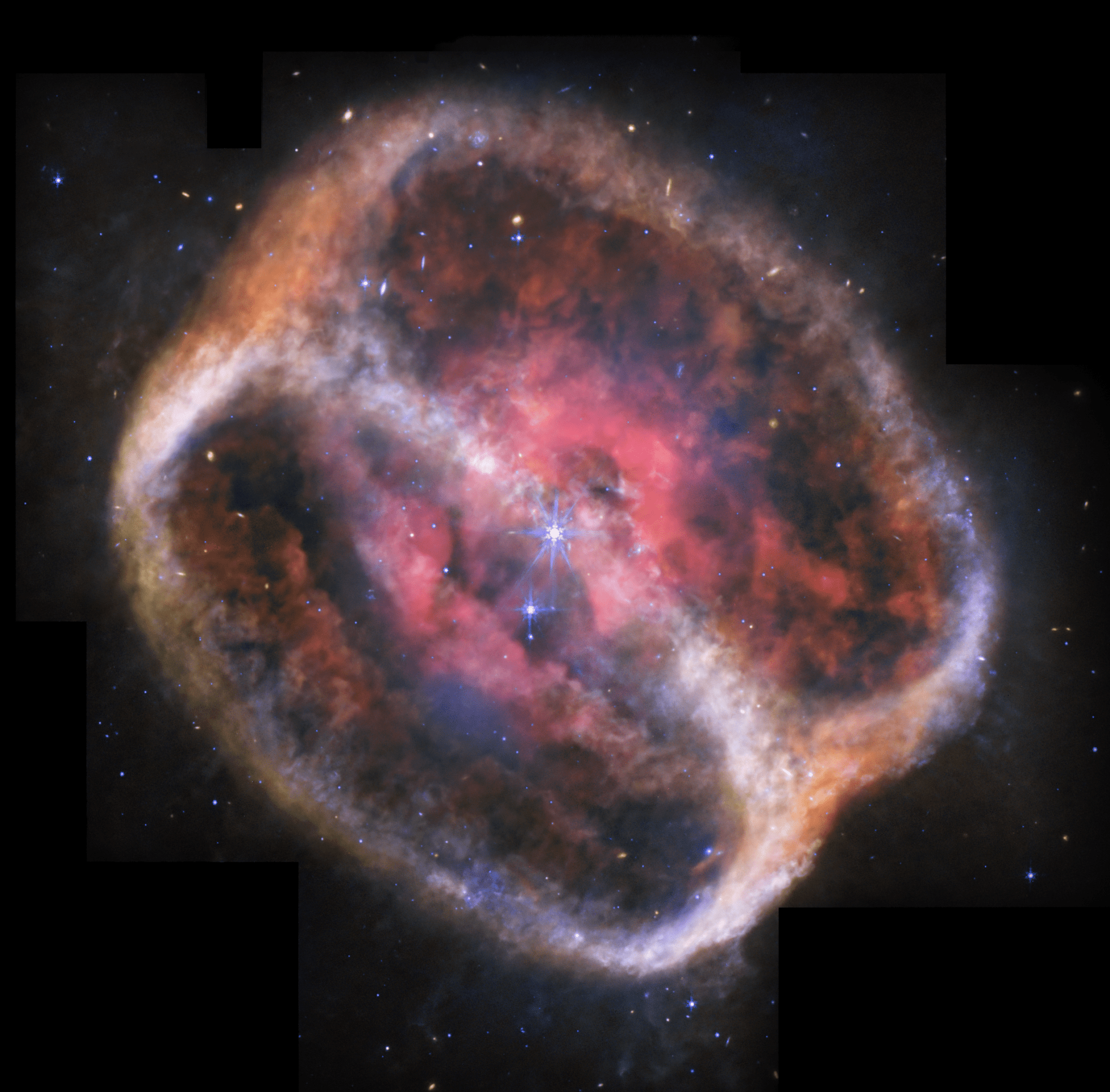Now Reading: Surface Deposition Of Icy Dust Entrained In Europa’s Plumes
-
01
Surface Deposition Of Icy Dust Entrained In Europa’s Plumes
Surface Deposition Of Icy Dust Entrained In Europa’s Plumes
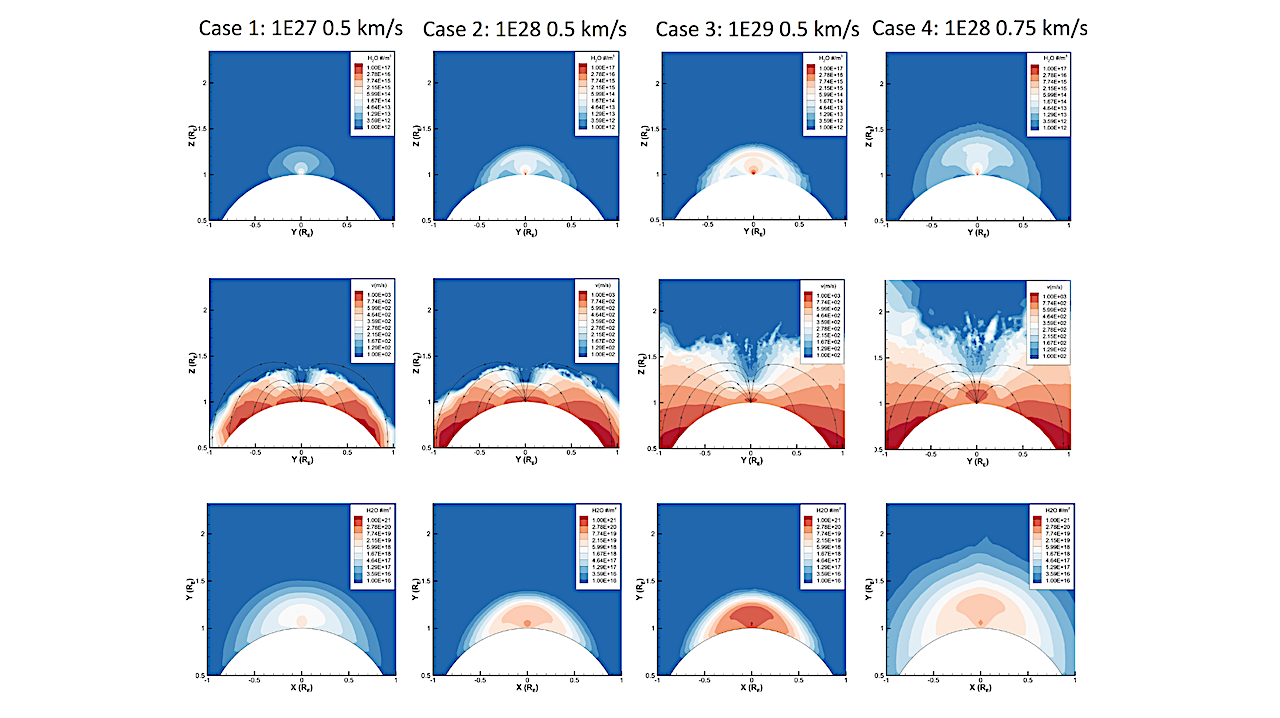

The DSMC simulation results of Europa’s gas plumes with four case studies. Top: number density distribution (shown in contours with a color scale in units of # m−3). Middle: gas velocity distribution (shown in contours with a color scale in units of m s−1). Gas flow streamlines are presented too. Bottom: column density distribution (shown in contours with a color scale in units of # m−2). Both axes are arbitrary and presented in units of Europa radius. — The Planetary Science Journal
Europa, an icy moon of Jupiter, features complex surface characteristics shaped by tidal forces and interactions with its subsurface ocean, making it a key target for astrobiology research.
Outgassing plumes have been reported using Earth-based observations and in situ Galileo mission data, though the nature of plumes on Europa remains largely unknown. This study investigates the dynamics of dust entrained in Europa’s water vapor plumes, which is crucial for understanding surface evolution and subsurface interactions. We employ the Direct Simulation Monte Carlo method to simulate these plumes considering various gas production rates and initial velocities.
The Direct Simulation Monte Carlo results provide information for dust trajectory modeling to evaluate the effects of gas drag on particle transport during an idealized plume eruption. We explore how gas production rates, initial gas and dust velocities, and dust size distributions influence plume morphology and deposition patterns.
Our findings reveal that gas drag plays a significant role in the behavior of dust, with smaller particles (0.001−0.1 μm) becoming widely dispersed, while larger particles (0.1−10 μm) tend to settle near the source.
At the highest gas production rate of 1 × 1029 H2O s−1 considered in this paper, gas drag becomes the dominant force and reduces the influence of initial ejection velocities. Our study also provides essential insights into surface−subsurface interactions on Europa, aiding in interpreting the upcoming observational data from the missions of JUICE and Europa Clipper, which will further explore these intriguing phenomena.
Surface Deposition of Icy Dust Entrained in Europa’s Plumes, The Planetary Science Journal
Astrobiology
Stay Informed With the Latest & Most Important News
Previous Post
Next Post
Previous Post
Next Post
-
 012024 in Review: Highlights from NASA in Silicon Valley
012024 in Review: Highlights from NASA in Silicon Valley -
 02Panasonic Leica Summilux DG 15mm f/1.7 ASPH review
02Panasonic Leica Summilux DG 15mm f/1.7 ASPH review -
 03How New NASA, India Earth Satellite NISAR Will See Earth
03How New NASA, India Earth Satellite NISAR Will See Earth -
 04And Thus Begins A New Year For Life On Earth
04And Thus Begins A New Year For Life On Earth -
 05Astronomy Activation Ambassadors: A New Era
05Astronomy Activation Ambassadors: A New Era -
06SpaceX launch surge helps set new global launch record in 2024
-
 07Space Force plans new ‘Futures Command’ amid pressure to speed up modernization
07Space Force plans new ‘Futures Command’ amid pressure to speed up modernization













